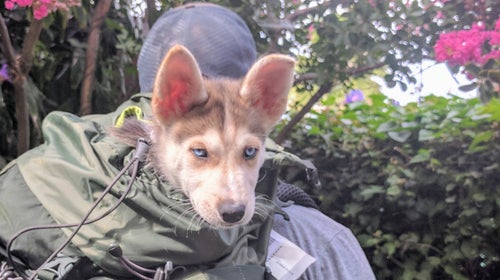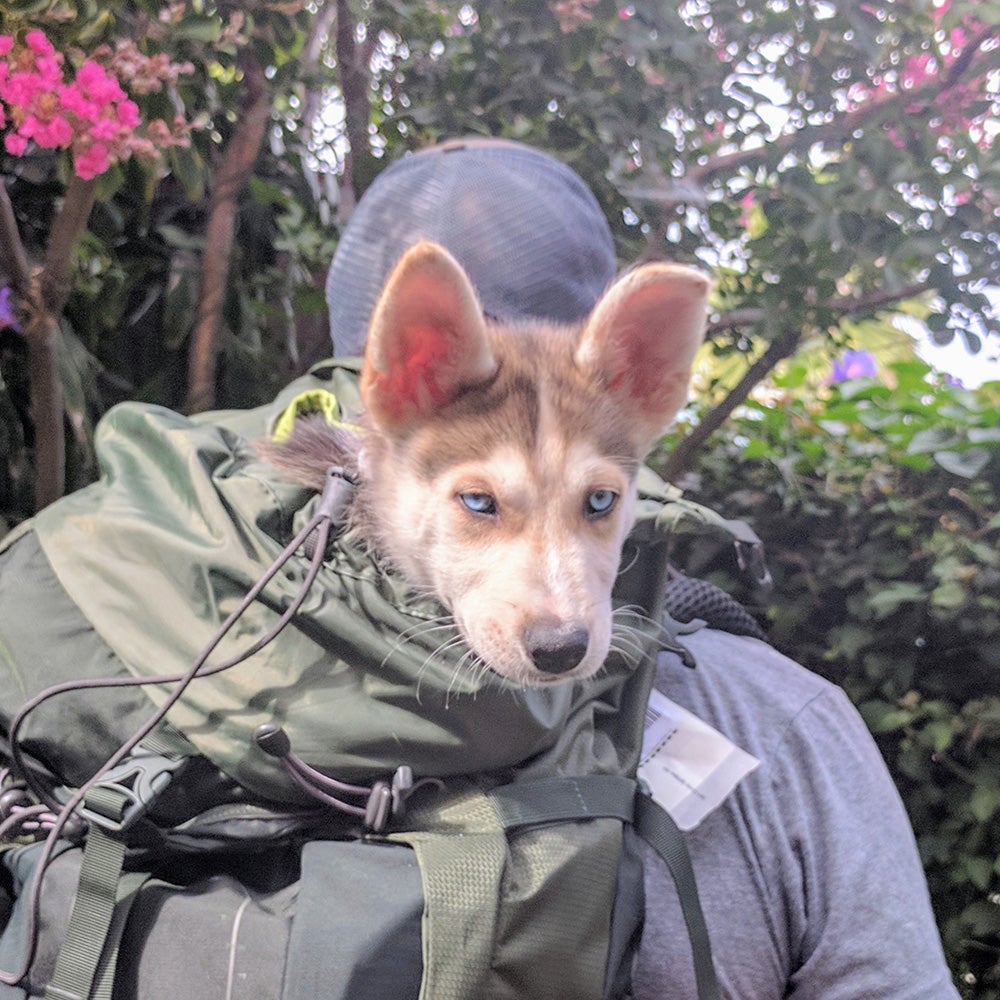It’s no secret that carrying less weight is the best way to improve your comfort, performance, and endurance on the trail. And one of the most effective ways to do that is to use a lighter pack. The difference between my heaviest pack and my lightest one is a full four pounds. But which is more comfortable?
Well, it depends.¬Ý
Backpacking Is¬Ýa System
Backpacking, or carrying a backpack to support other activities like mountain climbing, hunting, or anything else, needs to be approached systematically. Sure, you can just throw a tent in a pack and hit the trail, but once you start examining the experience, and trying to improve on it, you quickly learn that simply packing a lighter tent won‚Äôt actually help you all that much.¬Ý
Allow me to explain. A really good backpacking tent is probably a full two-thirds¬Ýthe weight of an average one. That may sound like a huge weight savings, but we‚Äôre talking about one pound, in a pack that probably weighs 25 pounds or more. You won‚Äôt be able to tell the difference between a pack that weighs 24 pounds, and one that weighs 25‚Äîsave your money.¬Ý
To really get the weight of that load down, you need to examine everything you carry, cutting out unessential items, and then reducing the weight of the stuff left behind. Together, ditching stuff you don‚Äôt need, and then buying a lighter tent, lighter sleeping bag, lighter sleeping pad, lighter stove, lighter water filter, etc., you might get that 25 pound pack down to 20. And once you‚Äôve done that, you may be able to use a lighter backpack, dropping another couple pounds. That‚Äôs the system.¬Ý
How Backpacks Work
We‚Äôre talking about technical outdoors packs with frames here, not the old Jansport you used back when books were still physical objects. That frame‚Äôs there to take the weight of the pack‚Äôs load and distribute it vertically down to the hip belt. That belt‚Äôs job is to distribute the weight around your hips. To do that, it needs to be as rigid as possible, again for that vertical weight transfer.¬Ý
Speaking strictly in terms of load transfer, an ideal backpack frame design is the large tubular rectangle that external frame packs used to use. There, the pack‚Äôs fabric body hangs from the frame, and all its weight is transferred down to your hips, where it‚Äôs supported by the largest, most powerful muscle group in your body‚Äîyour legs. The shoulder straps are basically just there to keep the frame from falling away from your back.¬Ý
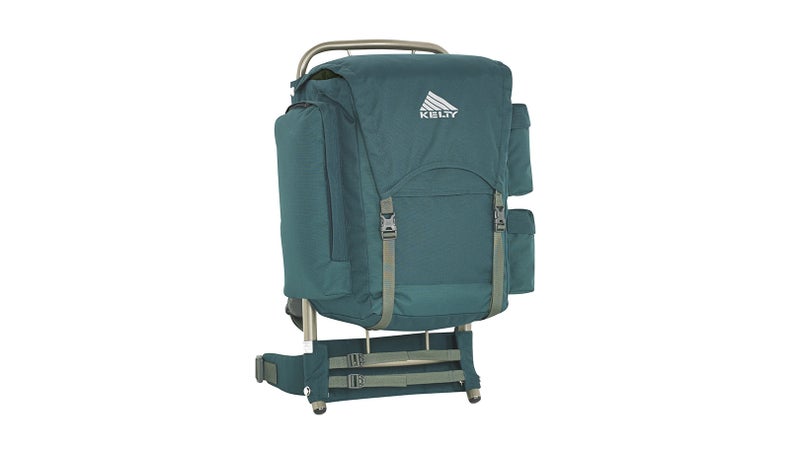
But¬Ýa backpack needs to be more than just a load transfer device. It needs to work in concert with the human body. That‚Äôs what gave birth to the internal frame designs that have almost totally supplanted the old external configuration. A thinner, more contoured internal frame sits closer to the wearer‚Äôs back, moving the pack‚Äôs weight into a more stable position, and is also better able to move with the wearer‚Äôs body, facilitating comfort.¬Ý
Internal frame designs have two main drawbacks. One: because the pack body is moved flush with your back, ventilation becomes a concern. And two: their thinner, lighter, more flexible frames aren‚Äôt as stiff, so they may not support weight quite as well as a big old external frame would have.¬Ý
The first problem has been solved by mesh suspension, which not only returns that crucial air gap, but helps to further contour the pack body to your back, boosting comfort. And the internal frame‚Äôs inherent weakness has largely been dealt with by progress in materials innovation, both in the pack itself and in all the rest of your outdoors gear.¬Ý
In the last decade, tents, pads, stoves, and all the rest of your stuff has grown drastically lighter. On my last backpacking trip, for instance, I carried a two-person tent with two doors and two vestibules , and a two-person sleeping bag-pad combo that was under six pounds. That‚Äôs less than half the weight of the stuff I was using just five years ago.¬Ý
With the ability to carry a shelter and sleep system (the heaviest stuff in your pack) that weighs just 3.8 pounds per person, do you really need to use a big, burly backpack?¬Ý
Ultralight Really Means Making Compromises
Let‚Äôs go back to the idea of backpacking as a system. If your shelter, pad, and bag weigh just 3.8 pounds, you use a catfood can for a stove, and cut the handle off your toothbrush, then you‚Äôre probably also looking to cut weight from the pack itself.¬Ý
That line of thinking has given rise to a cottage industry producing the lightest packs possible. Space age fabrics like the ultra-pricey non-woven dyneema (also called cuben fiber), slash weight. But these packs make savings by minimizing their frames. My lightest pack, the weighs just 1.79 pounds and achieves that by substituting a real frame for two tiny aluminum tubes that sit vertically in the pack body, on either side of the hydration bladder sleeve. It also eliminates load adjustment straps, and the waist belt is reduced to a thin piece of foam, backed by a layer of fabric. My forgoes the frame entirely, instead swapping in a foam ‚Äúbivvy pad.‚Äù I hope I never have to spend a night sleeping on the 18-inch square, 1/4-inch thick piece of closed cell.¬Ý

That design works great, so¬Ýlong as you keep the weight in the¬Ýultralight pack down. Extremely rudimentary not-quite-A-frames, and thin, flexible hip belts work fine if you only have 10 or 15 pounds on your back, total. But¬Ýcarry anything more, and all of a sudden you‚Äôll find your shoulders weighed down, your hip belt sagging onto your butt, and shots of pain coursing up and down your spine.¬Ý
The problem is so bad that on a trip with an injured friend a few years ago, he actually had to carry more weight off the mountain than I could, when we had to absorb another friend‚Äôs entire load. I was using that HMG pack, and it just couldn‚Äôt hold more than 35 pounds. He was able to carry 50 or so in his traditional internal frame Arc‚ÄôTeryx, despite his torn ACL.¬Ý
Is your entire use for a pack totally committed to carrying the lightest weight possible? If so, then maxing out your credit card on space age fabrics will work. If not, ultralight designs are not for you.¬Ý
Internal Frames Are Getting Stronger
In contrast, by employing carbon fiber for the frame sheet, innovative hunting gear brand Kuiu has been able to design an internal frame pack that can comfortably (it‚Äôs a relative term) carry over 150 pounds. The frame is radically stiff, yet light (the entire 118-liter pack weighs just six pounds) and will not flex or bend at all, even under extreme loads, and extends all the way up behind your head, enabling the pack body to be totally suspended from that frame, rather than some of the more integrated designs that are now common with internal frames.¬Ý
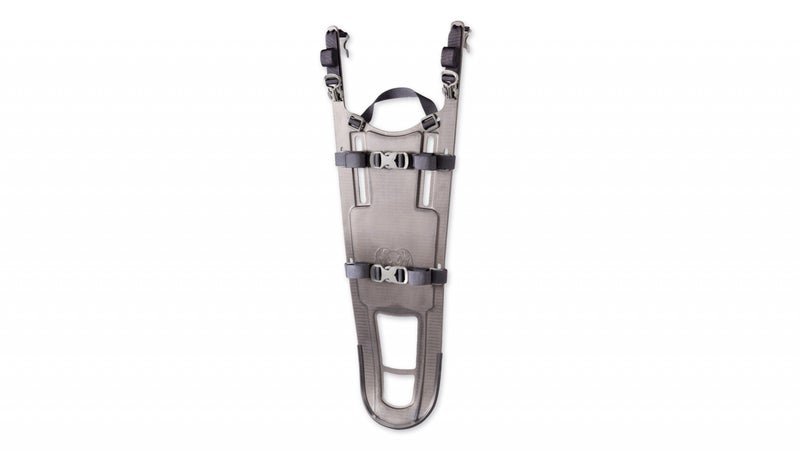
I haven‚Äôt yet loaded mine up with a quartered sheep, but I have used it to summit Washington‚Äôs Mt. Baker. The pack was so adept at load carrying that I offered to carry the majority of the 10-person group‚Äôs food. Loaded up with 60 pounds, I was quickly reminded that, while a pack might be capable of transporting heavy stuff, your quads may not be. If you hope to max out your Kuiu, I‚Äôd suggest prioritizing squats in your gym routine for at least a year first.¬Ý
It‚Äôs not just hunting packs that are improving. By combining both a stiff plastic frame sheet and metal stays to form a unique hybrid frame structure, Osprey has endowed its new Aether¬ÝAG (men‚Äôs) and Ariel AG¬Ý(women‚Äôs) packs with the ability to carry up to 60 pounds, in an all-up package that weighs as little as 4.8 pounds, while benefiting from the firm‚Äôs trademark ‚Äúanti-gravity‚Äù mesh suspension system.¬Ý
Can Any Pack Be Just Right?¬Ý
I have six internal frame technical backpacks in my regular quiver, not counting non-technical options I use for travel or city-based activities, like cycling and motorcycle riding, or day packs and hydration packs. That‚Äôs ridiculous overkill, even if I can halfway justify all of them by half-jokingly referring to them as tools of the trade. No one should have to own more than one framed backpack. So which one should you buy?¬Ý
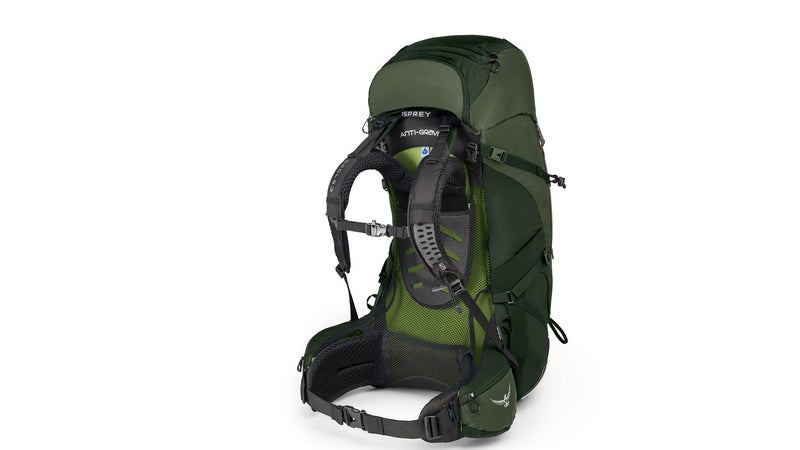
I love my fancy cuben fiber ultralight options because they help me shave the last few ounces of my truly ultralight base weight. But I have to pair them with a couple thousand dollars of the latest high-tech outdoors gear for them to work. And, if it‚Äôs hot out, I tend to leave them at home in favor of options with mesh suspension that allows my back to breath. An unsuspended pack riding against my back in summer heat once fooled me into thinking my hydration bladder had sprung a massive leak.¬Ý
Moving down the price spectrum, a $179 REI Traverse 48 offers all day comfort in a reasonably light package. But it‚Äôs not big enough to haul much gear beyond what you need to sleep, and it wouldn‚Äôt be comfortable with very heavy loads, even if you could fit them in.¬Ý
That is my go-to for load hauling, but I don't actually carry it on many hunting trips because its open-cell foam back panel causes me to sweat so hard. It‚Äôd be just the ticket for big, multi-day¬Ýtrips otherwise.¬Ý
Right in the middle of those two¬Ýis the new . It‚Äôs big enough for a multi-day trip, plus some luxuries, and can comfortably carry twice the weight I‚Äôd typically ask it to. Osprey builds its packs a little too feature rich in my opinion‚Äîwho actually needs a removable summit pack-cum-top lid?‚Äîbut the core product nevertheless gets the job done in total comfort. It‚Äôs a little heavier than my cuben options, at 5.4 pounds, but I think it makes up for that weight by allowing my back to stay dry, and offering the flexibility to load it up with heavy stuff in a pinch.¬Ý
Worried about the added weight a couple bottles of wine might add on a multi-day trip? In an ultralight pack, their weight might overcome the wimpy not-A-frames, and the weak hip belts. With the Osprey, I just throw them in a Platypus and don‚Äôt sweat it. Where other packs are too light or built solely for strength, the Aether is just all day comfortable.¬Ý
